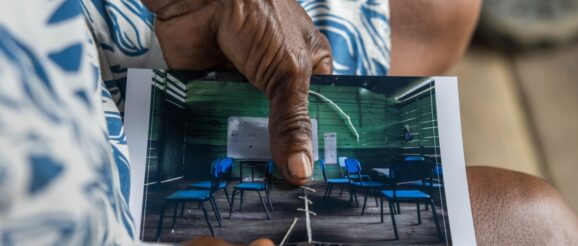Healing rituals in Colombia use torn pictures and trusted herbs Goats and Soda

Stitching sutures is one way doctors treat wounds.
The photo stitching is part of a two-year project conceived of by Doctors Without Borders, working with community healers and midwives from 2022 to 2024. The goal has been to create rituals to help manage the anxiety, depression and other mental health risks posed by the area’s widespread violence.

The rending and mending of photos is a metaphor for healing, according to Colombian photographer Fernanda Pineda, who documented the project. Other rituals to reclaim memories of once peaceful places beset by violence include the use of fragrant herbs and leaves the healers traditionally employ to reduce pain and bring comfort.
The organization also brought in medical teams to train 48 people in the community as health workers and health promoters to ensure the availability of basic medical services. That’s essential because the isolated location means that it may take two to three days to reach a health center or hospital.
As Santiago Valenzuela, a communication manager for Doctors Without Borders from Colombia, said, “We created a dialogue between Western medicine and local healers.”

Seven healers and the rituals they conceived and used during the course of the project are chronicled in Pineda’s photography series, Riografias del Baudó. It’s on view at the annual Photoville Festival in Brooklyn, New York, where a sprawling array of shipping containers are converted into mini-photo galleries through June 22. The project’s title uses the Spanish word for river in a play on the Spanish word for photograph, fotografía.
About 14,000 people, many of them of African descent or indigenous Embera, live in the approximately 130 communities in this rainforest area bordered by the Baudò River, Pineda said. Thousands of people have fled the region to avoid confrontations between armed groups that sometimes forcibly try to recruit them. The use of land mines by the combatants poses a constant danger. As a result of these threats, many of those who remain confine themselves for safety, unable to work or attend school.

People of all ages gather at the river in the above photograph, with family bungalow houses and immense greenery receding into the distance. “This shows their community,” Pineda says. “It’s morning, you see intimate moments with one woman holding a baby, people doing their wash, everyone is there.”

The kids at the river play with pails and balls and, as in this photo, a small canoe seen from the back. This young boy may have painted his face as a symbol of protection, Pineda said.
The peaceful river scene belies the stress that the community has suffered. “Chachajo is sick with fears. I am sure of that, because I, myself, live with that sickness,” says traditional healer Carmen Fidela Mena,



These new rituals do bring a sense of hope, the healers say — even as the fighting continues.
